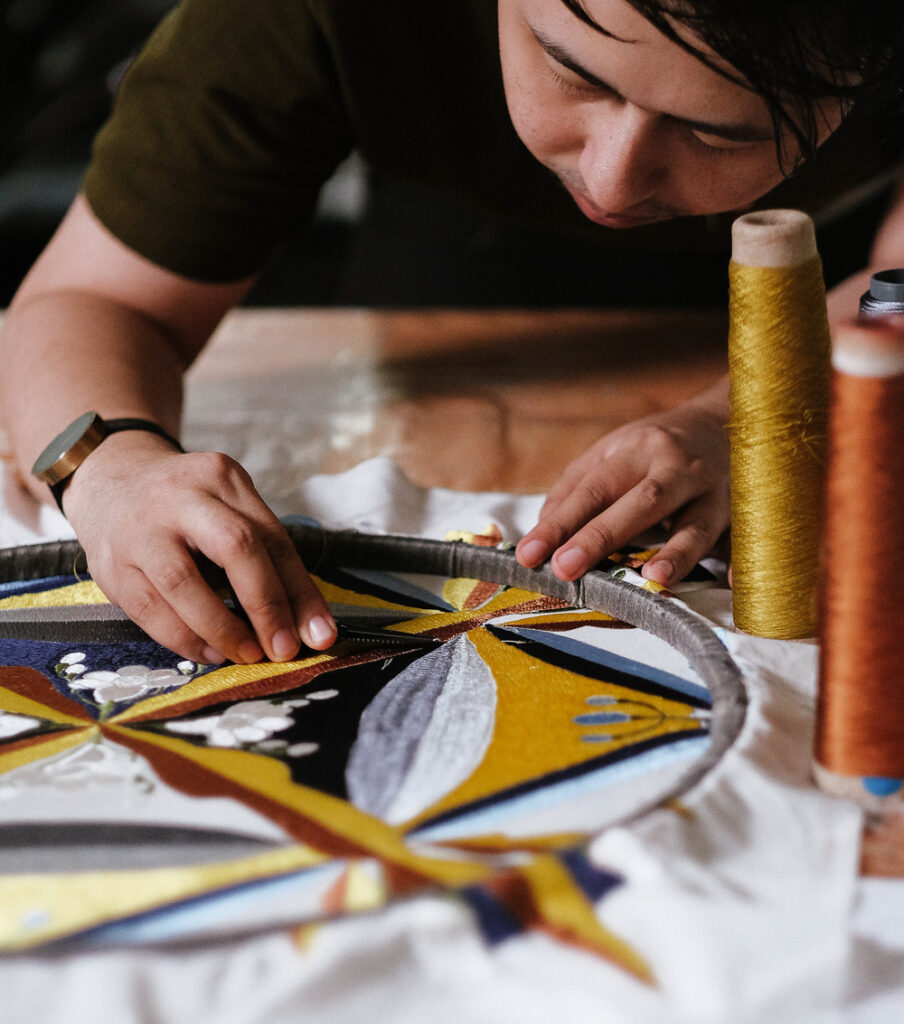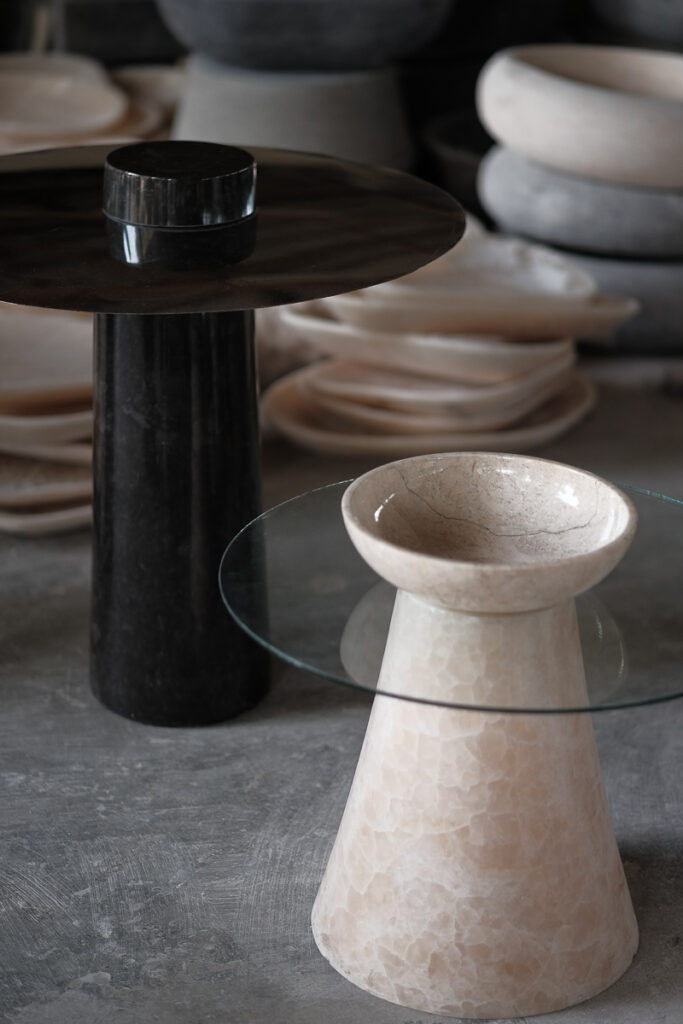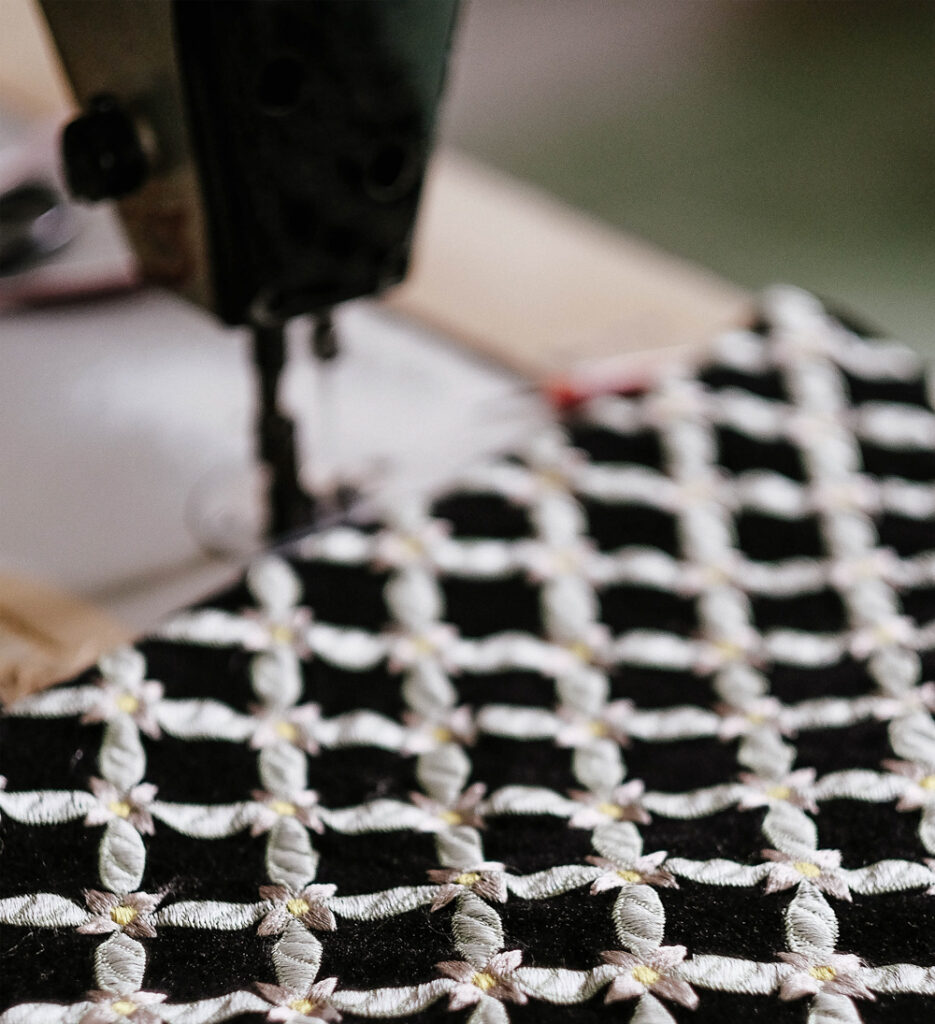
Eugenio Hendro ventures to East Java with the hope of making craft appeal to the next generation.
In 2012, The Ministry of Trade of Indonesia started a program called DDS, or Designers Dispatch Service. This program connects product designers with small to medium enterprises from all over Indonesia. In its first year, the Directorate General of National Export Development collaborated with Cirebon as a designated area for DDS pilot program. Only three SMEs were involved with this product development project at that time. Product designers were introduced to these local SMEs through a series of intense collaboration processes. The program itself runs from four to six months every year, and transfer knowledge between designers and artisans are pushed to create products that are market-ready.
I was lucky enough to have the opportunity as one of the chosen designers for DDS in 2015, and now in 2020. The area that I was assigned to was East Java where each designer had to collaborate with two SMEs. After reviewing many company profiles and product catalogues, I chose one embroidery artisan in Bangil-Pasuruan and a small marble company in Tulung Agung as collaborators for that year’s program.

This is where my eyes were opened to the real conditions of the creative industries outside Jakarta. I have a background in Industrial Design, and my design studio has much business with furniture brands. What I experienced in Bangil and Tulung Agung was very different from what I imagined. From the working schedule, peer to peer interactions, how they create, and the purpose of those creations, everything was so different from how we used to work in our studio.
Big brands are very aware of their market, their goals, and their customers. Research and development are very crucial for making new products for these brands. Therefore a good market analysis and a skill to understand the behaviour of their target market is a must. Things are not like that for our local SMEs which involve artisans. They create what they want, without fully understanding what the market needs. For artisans, they create to fulfil their passions, while for a big company, they create products to answer a problem in the market. Those clashing perspectives continue in how they perceive their product values, before entering the market.
As a designer trained for the modern corporation, I need to start afresh when it comes to local SMEs. So our first trip to Pasuruan and Tulung Agung was just an introduction involving data gathering, photo collecting, interviewing people, understanding their culture, and finding their goals.
I was so shocked to see that local craftsmanship is dying in these two places. Later on, I found that it was happening all over the globe. The digital era is changing how locals see embroidery and stone carving in East Java. These skills are now considered activities for old people. I didn’t see any of the younger generation practising these two incredible skills. Most went to the nearby city to work in a “modern” environment and embrace the digital era without paying any attention to their traditional skills. It is so sad to see that happened, because if only they understand that in the big city, the situation is the opposite of what they are thinking. We are constantly looking for something that is handmade, have a strong character, and rooted in the local culture.

Traditional skills need to adapt to modern ways of living. They need to overcome the pressure of globalisation and find their character again. Traditional skills need to adapt and evolve to be relevant. Without regeneration, the method, pattern, shape and aesthetics of their products were stuck in one era. That is why their products were easily categorized as “old people” products. There is nothing interesting or answering the needs of this generation. For the artisans in Bangil, they keep on making the same old flower pattern. For the marble carver, they still produce a car-size tiger statue, or horse statue just because those items were once trending.
Something needs to be done, to help this situation. This is why our role as a designer was not only to create beautiful products with them, but also to understand their way of living, and together find a way to survive the pressures of the digital era through design thinking.

Empathy is our basic tool for connecting with the artisans and SMEs. You can not rely on a mood board or technical drawings, or beautifully presented sketches. Most of them did not understand how to read technical drawings or the purpose of a mood board, or how to interpret a sketch or 3D rendering. They will not hear you.
I learned from this experience to empty my cup and learn everything together with them. I introduce them to market skills design thinking from the beginning of the process. Instead of pushing them to whatever is the current colour in fashion, I try to make them understand why the market prefers a certain colour for a product. Watch and learn how they make products, and what that product means for them. And together, we find ways to add value to the final products, and how to communicate that value to the market. As for that magnificent horse marble statue, do not instantly remove it. Instead, introduce them to items that are suitable for the living condition in the city.

For the embroidery artisans in Bangil in the city of Pasuruan who make the mukenah (hijab) and tissue box cover, we created a series of pillows with patterns that are developed from the local flower, the tuberose. Together we learnt to simplify the shape of tuberose and make it a seamless pattern to be embroidered on the fabric. And for the marble company in Tulung Agung, we created a series of side tables from the wasted marble and bathroom accessories utilising the wasted marble that we found scattered at the workshop.
This program gave the selected SMEs a chance to showcase their best products on the global stage, supported by the Ministry of Trade. Trade Expo Indonesia is the main stage to test the market for this collaboration. Along the way, they will have chances to perform in many exhibitions abroad and all or some will be subsidised by the Ministry of Trade. DDS gave tools and platform for the SMEs to navigate better in these modern times. We as designers also being selected through multiple stages, involving hard skills, soft skills, and even psychology test and interviews. All is needed to create a perfect team that can see the potential in these SMEs and at the same time push them to be better, efficient, impactful, and most of all, relevant.
Author
 Eugenio Hendro spent his childhood years in Manado, South Celebes. He studied product design at Bandung Institute of Technology ( ITB ) and majored in Industrial Design. He focused his studies on designing objects and furniture merging various cultural contexts, combining new technologies with traditional craftsmanship in order to highlight the multifaceted beauty of the materials and draw renewed attention to small details. Impressed by the fading grandeur of the past, his product statement is dark yet classic to symbolize the loss of tradition combined with the majestic life of the royals. He has exhibited in Singapore, Thailand, New York and Milan. He won Orbit 2018 for product design and was Hospitality Gold Designer of 2019. His work can be seen in several restaurants, and offices in Jakarta and Bogor. His interior design clients include bang and Olufsen Indonesia, Sony Indonesia, and Sari Pan Pacific.
Eugenio Hendro spent his childhood years in Manado, South Celebes. He studied product design at Bandung Institute of Technology ( ITB ) and majored in Industrial Design. He focused his studies on designing objects and furniture merging various cultural contexts, combining new technologies with traditional craftsmanship in order to highlight the multifaceted beauty of the materials and draw renewed attention to small details. Impressed by the fading grandeur of the past, his product statement is dark yet classic to symbolize the loss of tradition combined with the majestic life of the royals. He has exhibited in Singapore, Thailand, New York and Milan. He won Orbit 2018 for product design and was Hospitality Gold Designer of 2019. His work can be seen in several restaurants, and offices in Jakarta and Bogor. His interior design clients include bang and Olufsen Indonesia, Sony Indonesia, and Sari Pan Pacific.

